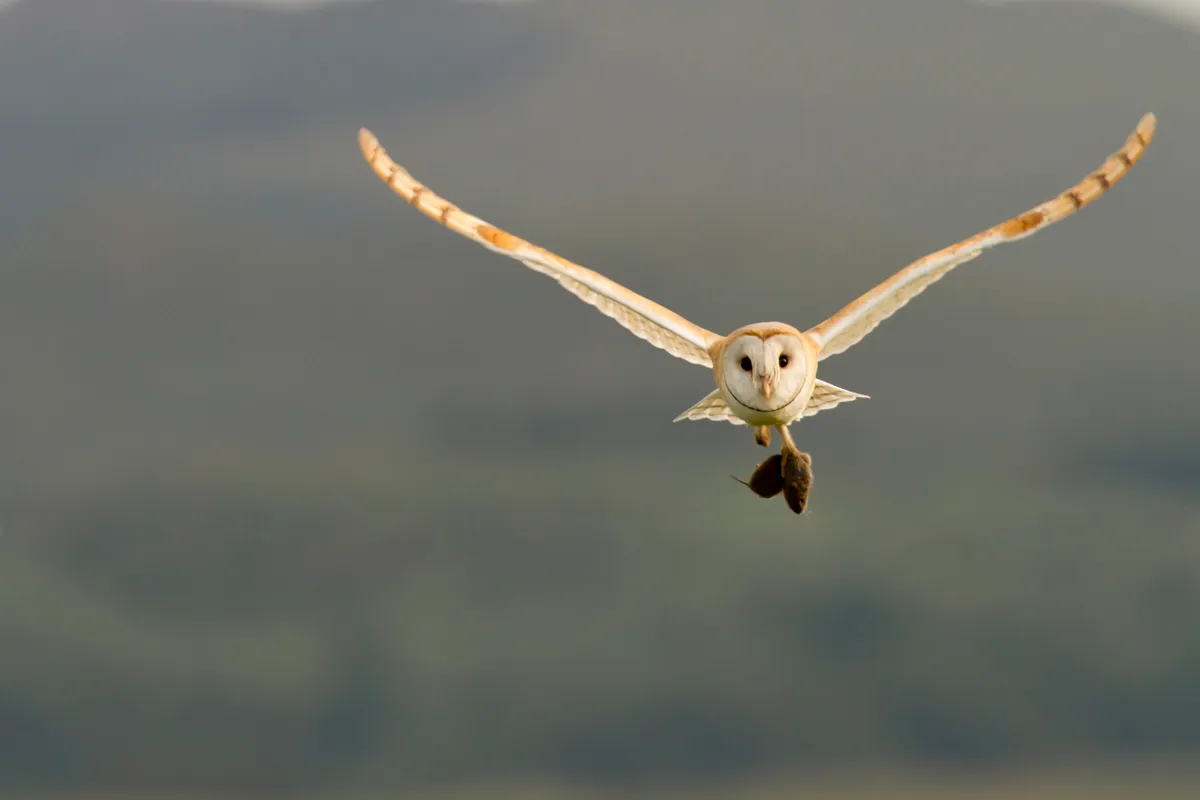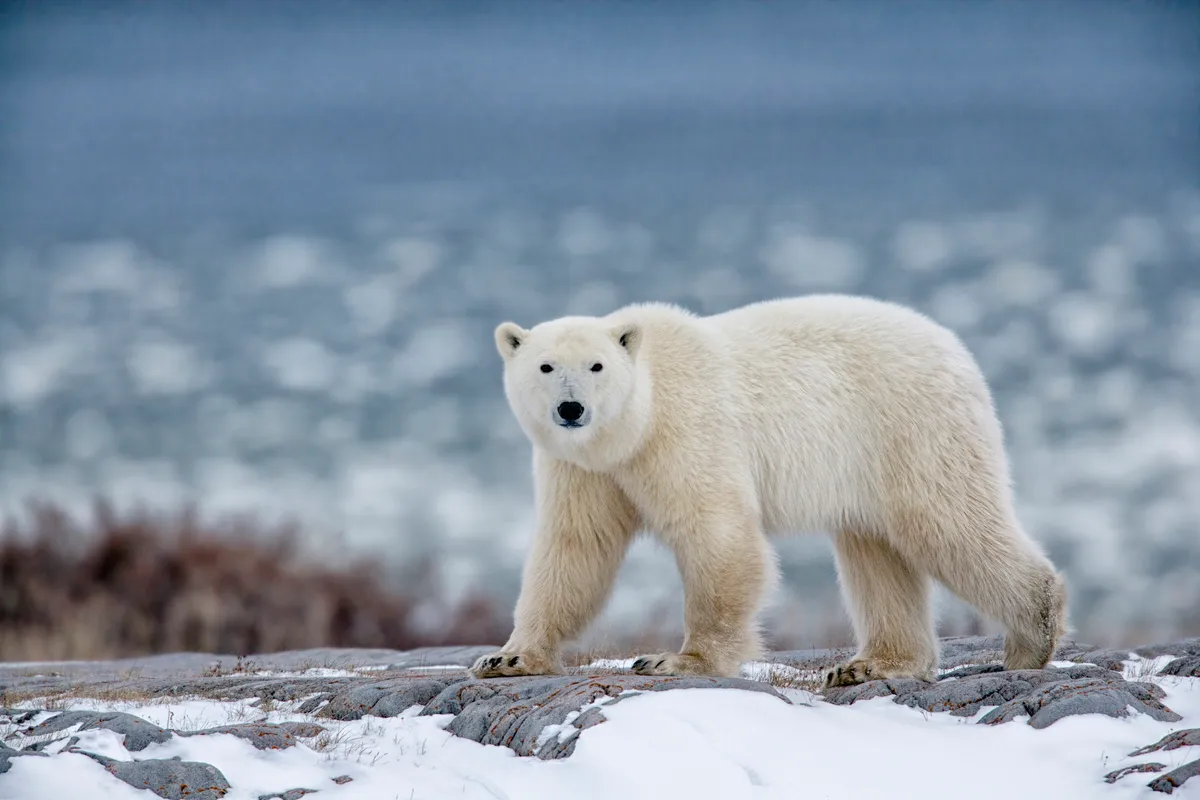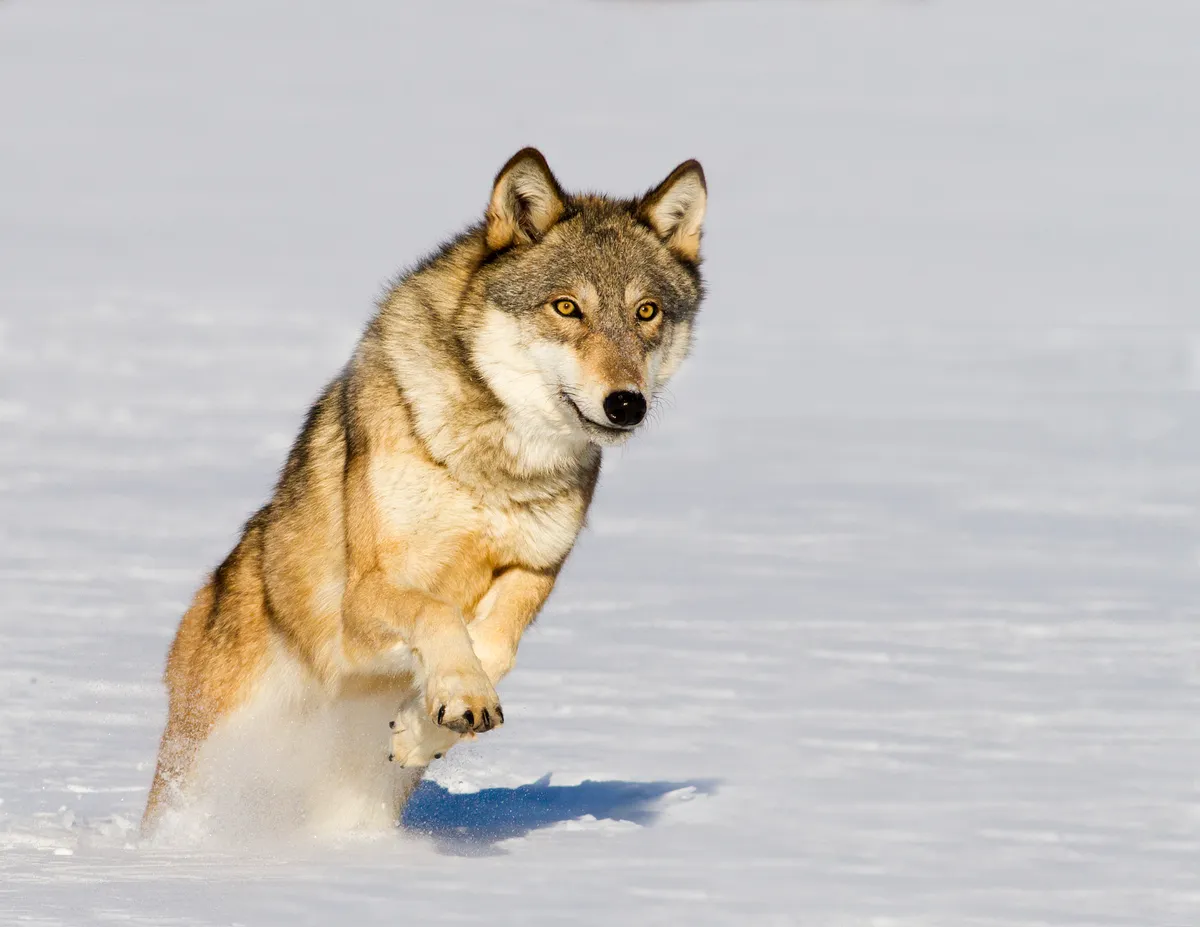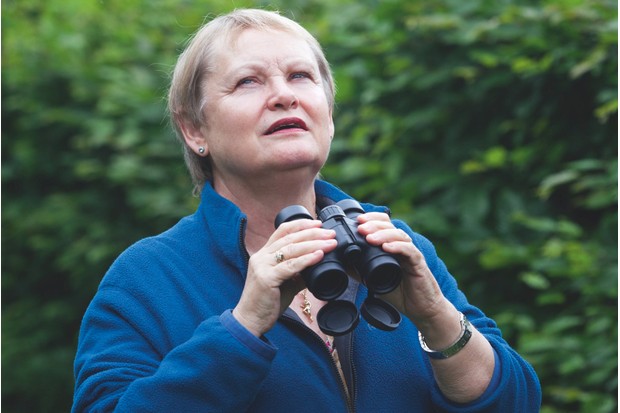Nature has equipped animals with some incredible superpowers – many of which we wouldn't mind having. From lightning-fast sprints to night vision, Sheena Harvey examines what you’d really gain from them … and why you could live to regret it
10 animal superpowers you'll wish you had
Run like a cheetah

If you could sprint from a standing start to 60 miles per hour in three seconds, wouldn’t that make catching a bus, train or flight so much easier? Of course, a cheetah only sustains a high speed for a few seconds, long enough to ambush and bring down its prey. To be able to run at pace along the pavement and intercept the bus before it leaves the stop, you’d have to have the attributes of a pronghorn antelope that can keep running for half a mile at 55mph.
- Cheetah vs leopard: what's the difference between these beautiful, spotted cats?
- Just how are cheetahs able to run so fast? All you need to know about the beautiful big cat, including the secrets behind its phenomenal speed
Going back to cheetahs, these sleek cats have an acceleration faster than a Porsche 911. The characteristics you would have to adopt to emulate that would start with a slender, lightweight bodyand long, thin legs. You would also need extra wide nasal cavities to deliver sufficient air to your enlarged lungs and heart to supply your muscles with plenty of oxygen.
The two bones of your lower legs would have to be close together to stop you losing balance in your speedy run, but this would adversely affect your ability to climb trees. Lastly, the soles of your feet would have to be very rough to give you grip in your sprint.
So, what you might gain in catching buses would have to be weighed with the number of pairs of socks you’d wear out.
Hold your breath like a loggerhead turtle

These sea turtles can hold their breath underwater for about 10 hours. Having an ability like that would be a distinct advantage if you were caught in a flood, or you had a spot of maintenance to do on your swimming pool or your home water tank. Escaping from a smoke-filled room would pose no problems and you could enjoy lengthy scuba dives without risking the bends because you would not need to breathe compressed air that builds up nitrogen in your tissues.
Loggerheads can do extreme breath holding because they are ecotherms – animals that rely on an outside source for warmth and do not need much oxygen to create their own heat. We humans are endotherms; we warm ourselves by generating our heat internally and that means we need a lot of oxygen and, consequently, have to do a lot of breathing.
Becoming cold-blooded in order to extend the time you can hold your breath would have undesirable knock-on effects on a human lifestyle. We’d have to live constantly in warm countries because in colder climes we’d be unacceptably sluggish, our immune and digestive systems would cease to function effectively and we’d have trouble reproducing.
Have eyes like a chameleon

If you are a person of a nervous disposition, you might long for a chameleon’s way of viewing the world. Its eyes protrude from the side of its head and they can move independently of each other. This affords the animal almost panoramic vision and the ability to keep an object firmly in view with one eye while at the same time scanning the surrounding area, including behind itself, with the other.
- It has very strange feet, can change colour, has amazing panoramic vision and a very long tongue. Meet one of the world's weirdest animals
- The 8 weirdest eyes in the animal kingdom: From creepy to cute, here are the eyes that take ordinary to extraordinary
What an advantage that would give you when driving. And you would never again be caught out by someone sneaking up on you.
A chameleon’s other useful attribute is to have each eye focussing independently, and that focussing is extremely precise and rapid. Imagine being able to simultaneously read a recipe and keep an eye on a pan coming to the boil. There can be no disadvantages to this useful trait, apart from turning you into that unnerving person who won’t meet anyone in the eye.
Sense of smell like a bear

All of the bear family have an exceptional sense of smell. A brown bear can smell a carcass at a distance of several miles. A polar bear can detect the scent of a seal through tiny cracks in the ice under its feet, and find a seal hauled out on the ice even though it’s 20 miles away!
- What is the biggest bear in the world?
- Who is the real Paddington Bear? Meet the heartwarming bears of South America's cloud forests, who inspired a fictional icon
We could use a better sense of smell in a number of different ways. We could avoid a dangerous environment by being able to smell smoke or noxious fumes while still at a safe distance. We could find a friend in a crowd by their unique odour or sniff out a mouse that has invaded our store cupboard. We could suss out the location of a restaurant several streets away from where we’ve parked. And a better sense of small would give us better taste to thoroughly enjoy the food we’ve found.
- How do animals smell? The difference between taste and smell and whether fish can smell underwater
- Which animal has the best sense of smell?
However, in our multi-layered, unfocussed world we would run the risk of sensory overload if we had scent receptors even as good as our domestic canines, let alone a bear. For the sake of good human relationships, it’s as well that we can’t smell all that well.
Move silently like a barn owl

If you were a spy, the ability to move around without making a sound could be useful. Barn owls are particularly silent flyers, relying on this characteristic to approach their rodent prey without alarming it into its hole. It also helps the owl to detect a scuttling vole because its hearing is not impeded by the sound of its own wing flaps.
To emulate this ability we would need to have arms that are relatively large compared to our body size, which would minimise the need for noisy flapping by enabling us to glide for reasonable periods. A lightweight body would also help in that respect.
The other prerequisite would of course be to have those long arms covered in feathers. But not just any feathers, ones that are especially adapted to be quiet. When a wing ascends and descends it pushes through the air to create sound waves and these manifest as a swooshing noise.
To minimise this, a barn owl’s feathers are larger than other birds of their size and the edges are like combs. The serrations of these combs break up the disturbed air and dampen the swoosh sound. Further sound damping is achieved by the surface of the feathers’ smooth velvet-like texture, unique to owls, and by the existence of a soft fringe on the trailing edge of the wings.
To have these special feathers so that you can make no announcement of your passing would meansacrificing trips out in wet weather. The soft feathers, by their nature, are highly absorbent and so the birds have no waterproofing.
Keep warm like a polar bear

How nice it would be in winter to keep toasty warm without having to don layer after layer of clothing. Polar bears have several tricks for keeping out the freezing Arctic winds. They are round and fat compared to other bear species, with small ears and a short tail to minimise heat loss.
Their coats are very dense, with long guard hairs overlaying a thick undercoat that traps air as an insulator. Polar bear fur is also coated in a type of grease that prevent the hairs from freezing when they dive in icy waters.
The bears’ skin beneath the white hairs (that aren’t actually white but hollow and transparent and so reflect visible light to appear white) is black. This helps the animal absorb and retain heat from the sun. Under their skin is a thick layer of blubber – up to 12cm (4.5in) in depth – that gives great additional insulation. Fur on the bottom of their feet mean they can walk on ice without losing their toes to frostbite but we would have to have similarly large feet to prevent us sliding on smooth floor coverings.
The trade off to us not having to wear lots of clothes would be fat bodies smothered in thick fur. Great if we spend all our time outdoors but un-bear-able as soon as we stepped indoors!
See at night like a wolf

When the sun goes down we humans are pretty useless at seeing our way without the help of a light source – a lantern, electric light or a torch. It would be so useful not to have to carry a flashlight with us, or have car headlights, streetlights or floodlights on buildings. The world would benefit from much less light pollution and we’d save a ton of energy.
Wolves have night vision perfected thanks to their tapetum lucidum. This is a reflective layer of tissue inside their eyes, behind the retina, that extracts maximum benefit in low-light conditions by reflecting incoming light waves back through the retina. This gives the eyes’ photoreceptors a second bite at the cherry in converting the light to electrical signals that can be interpreted as objects by the brain.
As with everything, though, one benefit comes at a cost to another. In this case, the tapetum lucidum reduces the definition of the images the brain interprets so a wolf’s vision is always slightly blurred, even in daylight. This is a reasonable trade-off for animals that rely on hunting for their food at night but not so much for creatures that need pin-sharp eyesight for so many of our activities.
Jump like a froghopper

This tiny insect is probably familiar to you if you walk in the countryside because its nymph stage is protected in a froth of white bubbles formed round the stem of a plant in spring and summer. The adult froghopper is only about 5mm (0.2in) long but it has the athletic ability to leap up to 70cm (two and a quarter feet) into the air. Relative to the insect’s size, that would be like a man jumping 180m (590ft), or roughly the height of Tower 42 in London or the Space Needle in Seattle, USA.
Being able to jump like a froghopper would eliminate the need for stairs and ladders around our home, stiles on a country walk, bridges across rivers. But in order to achieve this we would need thunderous thighs, as the secret tools in a froghopper’s toolbox are its hind legs with their verystrong muscles. Energy builds up as the animal slowly contracts those muscles and employs a locking mechanism to fasten the legs under its body – a bit like drawing an arrow back in a bow and holding it in place prior to firing it. When it loosens its legs, the pent-up energy is released and the insect is propelled forwards or upwards.
It wouldn’t be a comfortable experience, either, as when a froghopper jumps it experiences a G-force of more than 400 times its body weight. By contrast, astronauts face a G-force of around five to seven times their weight when the spaceship accelerates to break out of earth’s gravity field, and aride on a rollercoaster exerts a puny G-force of two.
Keep cool like a giraffe

A giraffe’s unusual shape and patterning give it clever ways of keeping cool that don’t involve sweating and therefore losing precious hydration in its dry African home. The first secret is in themottled patches. Around each patch is a large blood vessel that connects with a maze of smaller capillaries under the patch. These dilate to efficiently release heat from the circulation system like radiator panels.
- Giraffe guide: species facts, lifespan and habitat
- Giraffes only sleep for 30 minutes a night and only drink a couple of times a week? Discover 15 crazy facts about the world's tallest animal
You might wonder why the animal isn’t therefore completely covered in these small, heat-shedding blood vessels. That’s because the patches serve a double purpose of camouflaging it in the dappled African bush and a mottled approach works fine for both purposes.
The reason for the spots being dark is less clear but they are melanin-rich and so thought to help a relatively short-haired animal to avoid sunburn. Short hair is important in not offering too much insulation that would prevent body heat from escaping.
In addition, giraffes’ long necks greatly increase the surface area of heat-shedding patches and theirlong legs elevate their bodies to allow plenty of ventilation and take full advantage of any cooling breeze.
We would certainly benefit from sweating less in a tropical atmosphere and a long neck would be useful at concerts and sporting events, but such a large surface area would not benefit us in a temperate or colder climate. Imagine how many scarves you’d need!
Eat like a shrew

If you like your food, it would be an ideal world if you could eat as much as you liked and not put on weight. Unfortunately, food consumption is not primarily for pleasure but to provide energy for your body to function. Humans, with our general metabolic rate, can mostly balance moderate food consumption with exercise and maintain ourselves in reasonable shape. If you eat too much or don’t use up that energy it will inevitably be converted to fat and the weight will pile on.
If you had the metabolic rate of a pigmy shrew, however, you would burn off energy in next to no time. Sound good? Well, as with everything it’s not the perfect scenario you might wish it to be. A pygmy shrew has to eat every two hours to remain healthy. They have to find more than their body’s weight in food every day and they have to sleep in short bursts – 15 minutes activity followed by 15 minutes sleep, all day long. It would be difficult to lead a normal human life, hold down a job and interact with family in those circumstances. And think of the food bills!






